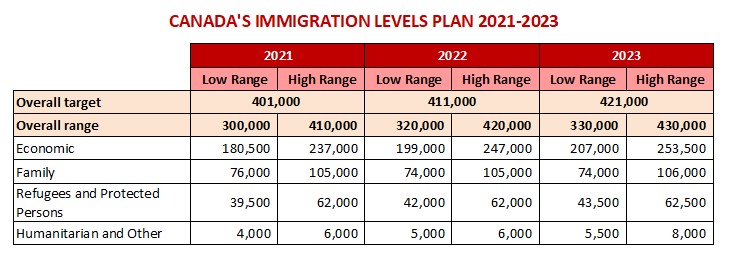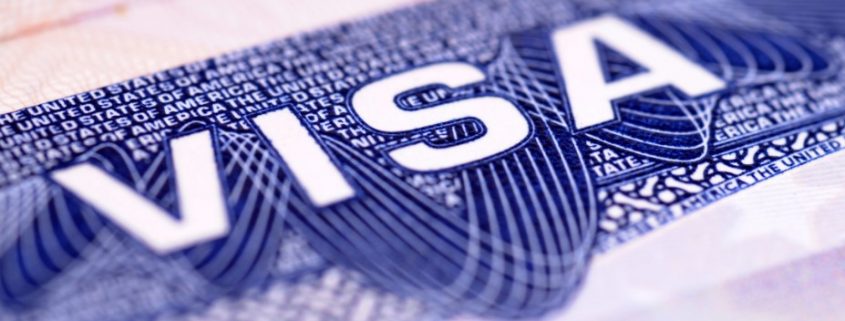Canada Increases Immigration Targets for Economic Recovery
Canada’s immigration plan is out. We are increasing immigration targets to over 400,000 per year from 2021 to 2023.
The Honourable Marco Mendicino, Minister of Immigration, Refugees and Citizenship, tabled the 2021‒2023 Immigration Levels Plan today. The increase is aimed to help the Canadian economy recover from COVID-19, drive future growth and create jobs for middle class Canadians.
The COVID-19 pandemic decreased the acceptance of new immigrants to Canada for 2020. To compensate for the shortfall and ensure Canada has the workers it needs to fill crucial labour market gaps and remain competitive on the world stage, the 2021 to 2023 levels plan aims to continue welcoming immigrants at a rate of about 1% of the population of Canada, including 401,000 permanent residents in 2021, 411,000 in 2022 and 421,000 in 2023. The previous plan set targets at only 351,000 in 2021 and 361,000 in 2022.
The pandemic has highlighted the contribution of immigrants to the well-being of the Canadian economy. Among others, the Canadian health-care system, information technology, farmers and producers are seen to rely on immigrants to maintain supply chains, expand businesses, and create more jobs.

Highlights of the plan include
- an increase in admissions over the 3 years of the plan to make up the shortfall in 2020
- a focus on economic growth, with about 60% of admissions to come from the Economic Class
- a continued focus on innovative and community-driven approaches to address diverse labour and demographic needs across the country
- a renewed commitment to capacity-building and digital transformation in Canada’s immigration system, to support operations and mitigate the impacts of COVID-19 on the processing of applications
- additional points for French-speaking candidates under Express Entry, to promote the growth of Francophone communities outside of Quebec
- a commitment to admit up to 500 refugees over the next 2 years through the Economic Mobility Pathways Project, an innovative approach that helps qualified refugees apply for permanent residence through existing economic immigration pathways
- a pathway to permanent residency for eligible asylum claimants who were working on the front lines of the pandemic between March 13 and August 14, 2020, providing direct care to patients in health-care institutions
Note that the plan excludes Quebec. Under the Canada-Quebec Accord, Quebec establishes its own immigration levels.
The 2021–2023 Immigration Levels Plan will help cement Canada’s place among the world’s top destinations for talent, creating a strong foundation for economic growth while reuniting family members with their loved ones and fulfilling Canada’s humanitarian commitments.
Got questions? Contact us here.
______________________







Leave a Reply
Want to join the discussion?Feel free to contribute!